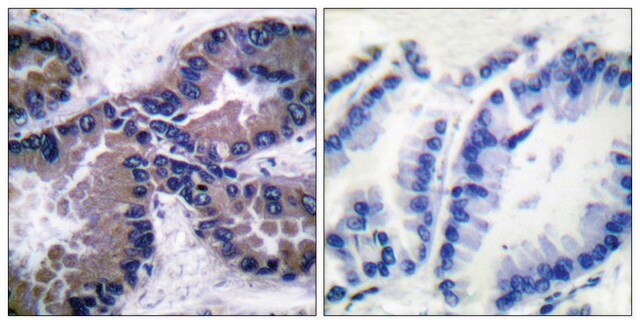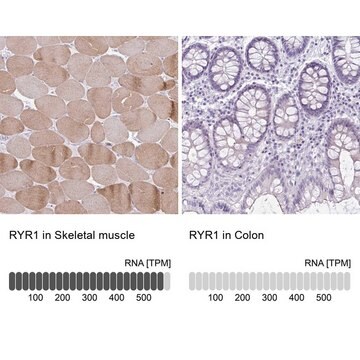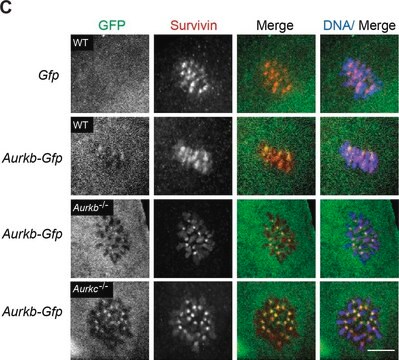추천 제품
생물학적 소스
mouse
Quality Level
결합
unconjugated
항체 형태
ascites fluid
항체 생산 유형
primary antibodies
클론
34C, monoclonal
분자량
antigen 565 kDa (non-mammalian vertebrates, doublet at 565 kDa representing the α and β isoforms)
종 반응성
human, rat, rabbit, canine, mink, bovine, frog, fish, primate, chicken, mouse, sheep
기술
direct immunofluorescence: suitable
immunohistochemistry (frozen sections): 1:1,000
immunoprecipitation (IP): suitable
western blot: 1:5,000
동형
IgG1
UniProt 수납 번호
배송 상태
dry ice
저장 온도
−20°C
타겟 번역 후 변형
unmodified
유전자 정보
human ... RYR1(6261) , RYR2(6262)
mouse ... Ryr1(20190) , Ryr2(20191)
rat ... Ryr1(114207) , Ryr2(84025)
일반 설명
면역원
애플리케이션
Western Blotting (1 paper)
물리적 형태
면책조항
적합한 제품을 찾을 수 없으신가요?
당사의 제품 선택기 도구.을(를) 시도해 보세요.
Storage Class Code
10 - Combustible liquids
WGK
nwg
Flash Point (°F)
Not applicable
Flash Point (°C)
Not applicable
개인 보호 장비
Eyeshields, Gloves, multi-purpose combination respirator cartridge (US)
자사의 과학자팀은 생명 과학, 재료 과학, 화학 합성, 크로마토그래피, 분석 및 기타 많은 영역을 포함한 모든 과학 분야에 경험이 있습니다..
고객지원팀으로 연락바랍니다.






